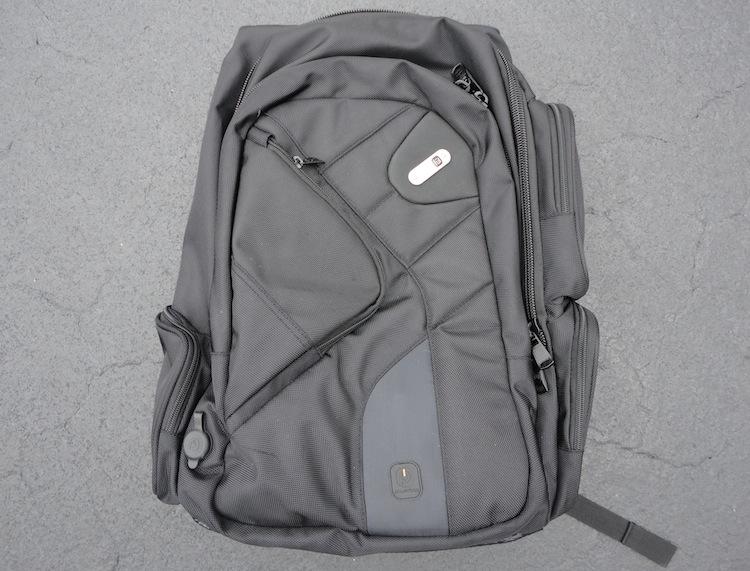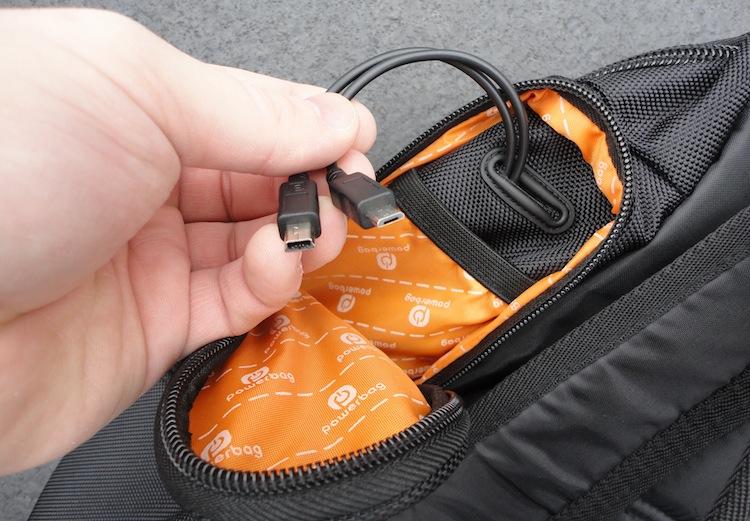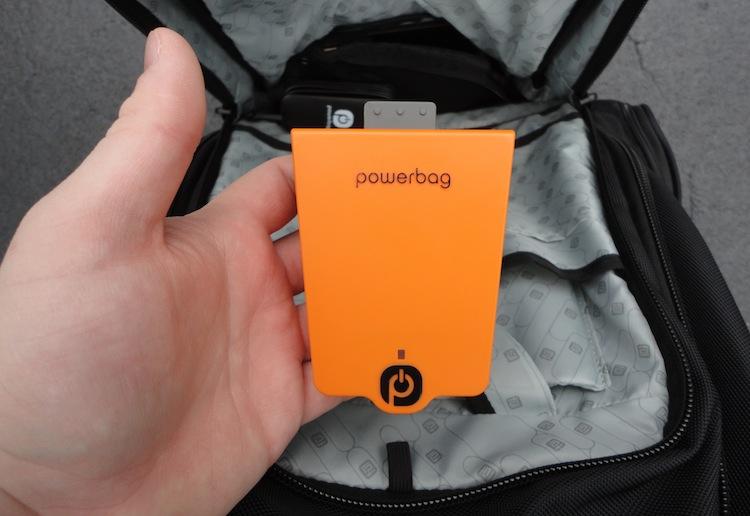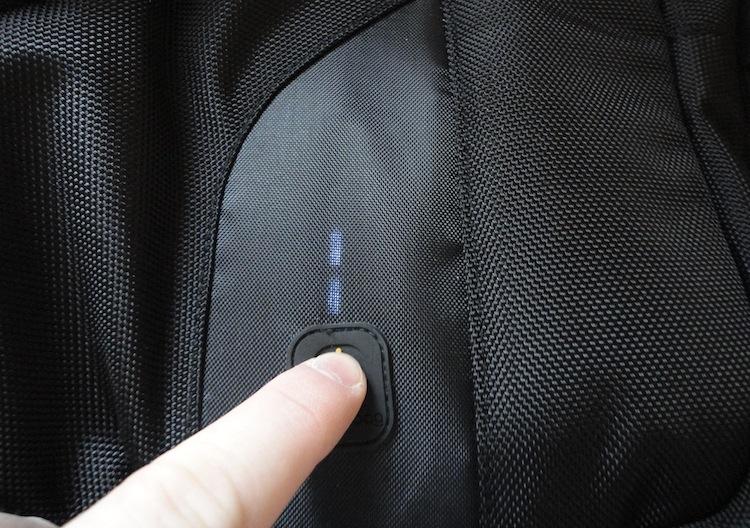
While this year's CES wasn't the most eventful or exciting, there were many great products, and one of the coolest PhoneDog came across were Powerbags. On the outside, Powerbags are nothing more than your typical backpack. But on the inside, it's a smartphone and tablet lover's dream come true. Powerbag, as the name implies (and the picture above shows), is a portable charging solution for mobile devices.
Powerbags have a lot to offer over your typical book bag or simple battery pack, but they aren't exactly cheap. They range in price from $139.99 to $249.99 and come in an array of designs and forms. Is a Powerbag the pack for you? Are these bags worth the extra change? I left Las Vegas with a Deluxe Backpack by ful in tow. Here are my findings:
When you first look at a Powerbag, unless you know what you're looking for, it looks no different than your typical backpack. The Deluxe Backpack is a bit on the heavy side at 3.1 pounds, empty, and is made of a very sturdy and thick canvas material. There's nothing I hate more on a backpack than a cheap, flimsy handle. But this particular Powerbag has a very sturdy handle that connects between the arm straps. This gives the bad a nice, padded feel across your back, neck and shoulders.

And there is no shortage of pockets and compartments either. The main pocket is a very large spacious one with plenty of room for textbooks, accessories and whatever else you can manage to cram in there – seriously, it's a huge compartment. There is also a smaller zip pocket in front of the main pocket with a dedicated 10-inch tablet compartment, pen slots and a plethora of other holders. Within this smaller, front pocket, you will also find the slot for the battery pack and a USB port (5VDC, 1-2.1A out) for charging tablets. On the very front of the bag, there is a sealed plug for charging the bag and a small pocket for holding something about the size of a smartphone or hotspot. At the bottom of the left edge, there is a side-pocket, and along the right edge, there are two more smaller-sized pockets: the top one has pre-routed micro USB and mini USB cables (both 5VDC, 800mA output) and the bottom has a 30-pin connector (5VDC, 1A output) for iPhones and iPods. Lastly, between the back padding and the main pocket is a dedicated laptop pocket, which will hold up to 16.5-inch laptops.
Overall, I really like the feel of the bag. Its exterior dimensions, as listed on mypowerbag.com, are 4.5-inches deep by 13.5-inches wide and 23-inches tall, so it's a bit on the large side. If you're looking for a lightweight and compact bag, this one probably isn't for you and you should look at the regular Backpack or Sling. For me, the Deluxe is perfect, as I like to carry a lot of junk with me every day (two tablets, a laptop, multiple phones, cables galore, camera and a couple pairs of headphones, minimum.). The Deluxe holds all of it and gives me plenty of room for more, if need be.

It seems kind of silly to judge a backpack on usability and performance, but when you throw in a battery pack and dedicated compartments, I guess it makes a little more sense than with your typical bag.
Inside the Powerbag Deluxe, you will receive a 6,000mAh battery pack, which is found in the very bottom of the front pocket. It is connected to a dock of sorts that supplies the back with three cables: micro USB, mini USB and a 30-pin connector. The cables are pre-routed to side pockets, like I've explained above. I found this to be both good and bad.
For one, you will always know where to go to charge specific devices. The top side pocket is for any device that needs a mini or micro USB connection and can be charged off of 800mA. An iPod or iPhone, for instance, would be charged in bottom side pocket. And anything that needs 1-2.1A to charge – or anything that uses a non-standard cable, like a Transformer Prime – can be plugged into the USB port beside the battery cartridge.

The bad part about pre-routed cables, however, is that this is somewhat wasteful or inefficient for people who don't have a particular device. If someone carries only an iPhone and an iPad, the pocket with mini and micro USB connections is useless. Likewise, for someone without an iPod or iPhone, the bottom side pocket is completely worthless. It has worked out well for me, solely because I carry both Android devices and an iPhone. I, for one, have no use for a mini USB cable anymore, so I have been using a mini USB to micro USB adapter.
What makes very little sense to me, though, is the use of an 800mA output on the mini and micro USB connections. Most devices will accept the charge – it worked for the Skyrocket. But the Galaxy Nexus requires at least 1A to charge. So, to charge my Nexus with the bag, I had to plug my own micro USB cable into the provided USB port. If you are going to use a 1A output for the 30-pin connector, why not just use the same for the other cables?
The other part that boggled my mind was the fact that there was only one USB port. I understand that a 6,000mAh battery pack can only put out so much juice at once. But what if someone wanted two self-routed cables (there are elastic bands that you can thread your own cables through in the front pocket), like a micro USB for my Nexus and the proprietary Galaxy Tab cable, so that I wouldn't have to keep plugging and routing different cables?

Another thing I would like to see offered from Powerbag is larger capacity battery packs. The 6,000mAh battery pack will fully charge most phones up to four times. Typically, I got about three full charges and some change before needing to plug the bag itself in. That's not bad by any means, but there's a lot of space in this bag, and seeing as the primary differentiating factor between the Powerbag and any other bag is the battery pack, I would like to see more juice.
There are additional battery cartridges up for sale on the Powerbag website – 9,000mAh, 6,000mAg and 3,000mAh – and you can easily throw more than one cartridge in the bag, just in case. But I would like to see even larger packs for purchase, like a 12Ah or even a 16Ah pack, mainly because the standard cartridges will not even fully charge all of my devices one full time. The Galaxy Tab 10.1 has a 7,000mAh battery. Count that and two phones, and two 6,000mAh packs will barely charge them all ... once. I know it sounds a bit excessive. How often am I going to need to fully charge my Galaxy Tab? The point is, however, it's a bag dedicated to charging mobile devices, and it would be nice for battery mongers such as myself to be able to buy larger-than-normal battery packs for it.
As an example, I can purchase a 16,000mAh battery pack on Amazon.com for roughly $70. This pack, which is nearly double the largest cartridge offered by Powerbag, is only slightly larger at 5.8-inches by 3.2-inches by 1-inch. It has five USB ports and will charge five devices simultaneously. If something like this were built into the Powerbag (or offered as an add-on), it would be absolutely perfect.
The good part about extra cartridges is that they can be charged with the same AC adapter as the bag itself, instead of actually needing to be docked in the backpack or needing a cradle. So buying additional battery packs isn't a bad alternative. I'm just a sucker for battery packs, and I need more juice!

I've been using the Powerbag for just under two weeks now, and to be honest, I'm thoroughly impressed. It does a good job of keeping my phones charged and holding all of the stuff I haul around every day without bursting at the seams. Not to mention, I love the quality of the material used and the actual design of the bag. It's a tad bulky and heavy, but hey, that's what you get with a high quality bag full of batteries.
The price is a tad steep, and the only real benefit to carrying this instead of a normal backpack with any ol' battery pack charger is the fact that different cables are routed to different pockets. I would prefer a little more juice than a 6,000mAh battery, and it would be nice to be able to re-route and swap cables as needed, but the stock configuration has worked well for me – it may not for everyone.
To sum things up, I absolutely love the Powerbag Deluxe. There are definitely some things I would change about it, but it has officially replaced all of my other bags and battery packs, mainly due to the convenience factor. And that's saying something – I'm super picky. Until Powerbag comes out with a bag with a little more ... power, the Deluxe will be my backpack of choice, hands down.
What's Good: Comfortable and sturdy design; lots of space and pockets; quality materials and built very well; keeps phones and (most) tablets charged on the go.
What's Bad: No re-routing of your own cables; relatively expensive; could use at least one more USB port, larger battery cartridges, higher output for mini and micro USB.
The Verdict: Overall, the Powerbag Deluxe Backpack is perfect for those who need juice when they're away from a charger. For those looking for a similar option without spending so much money, it's certainly easy and feasible to make your own for less. But the high quality materials, pre-routed cables and external access to the power button push Powerbags over the top.